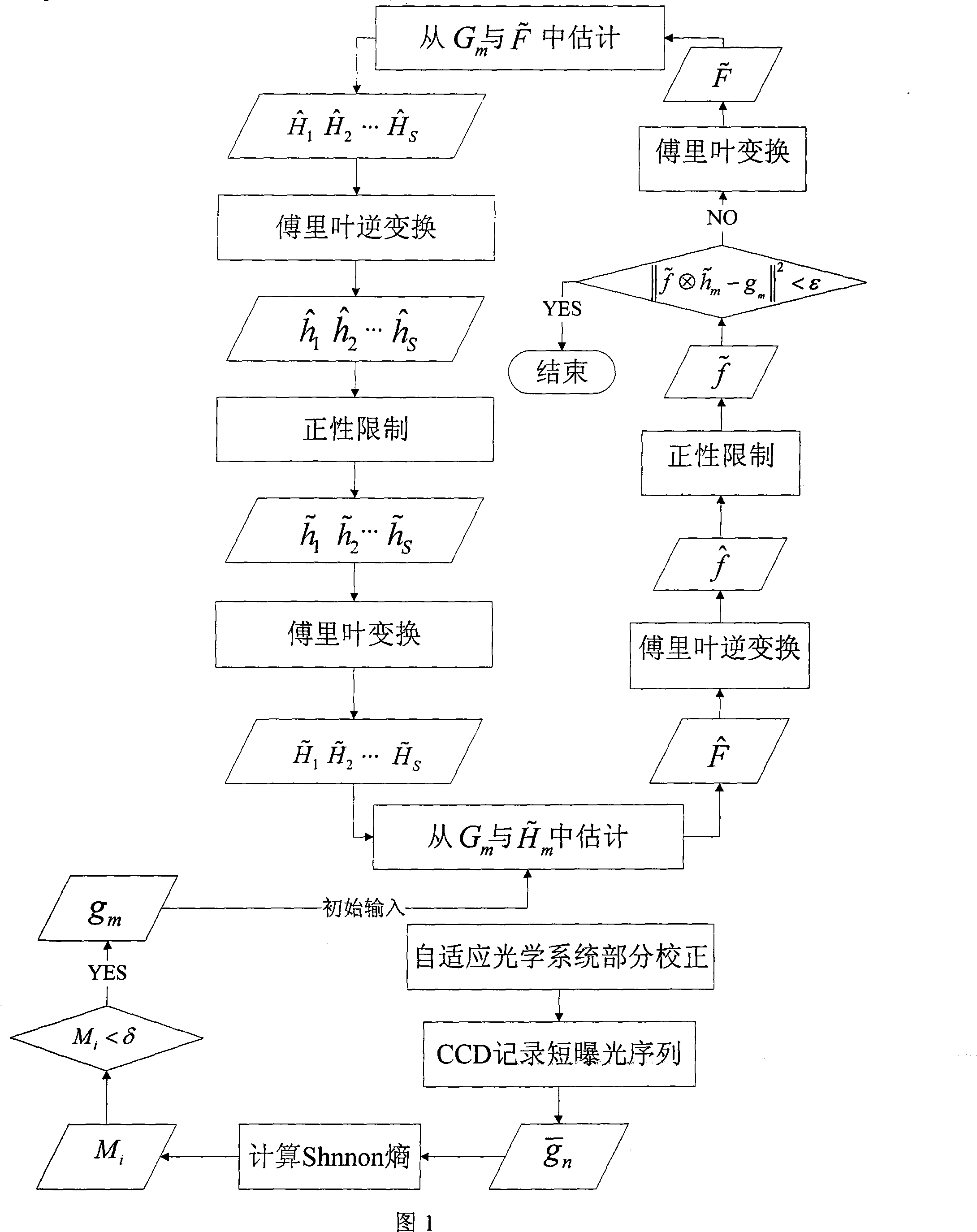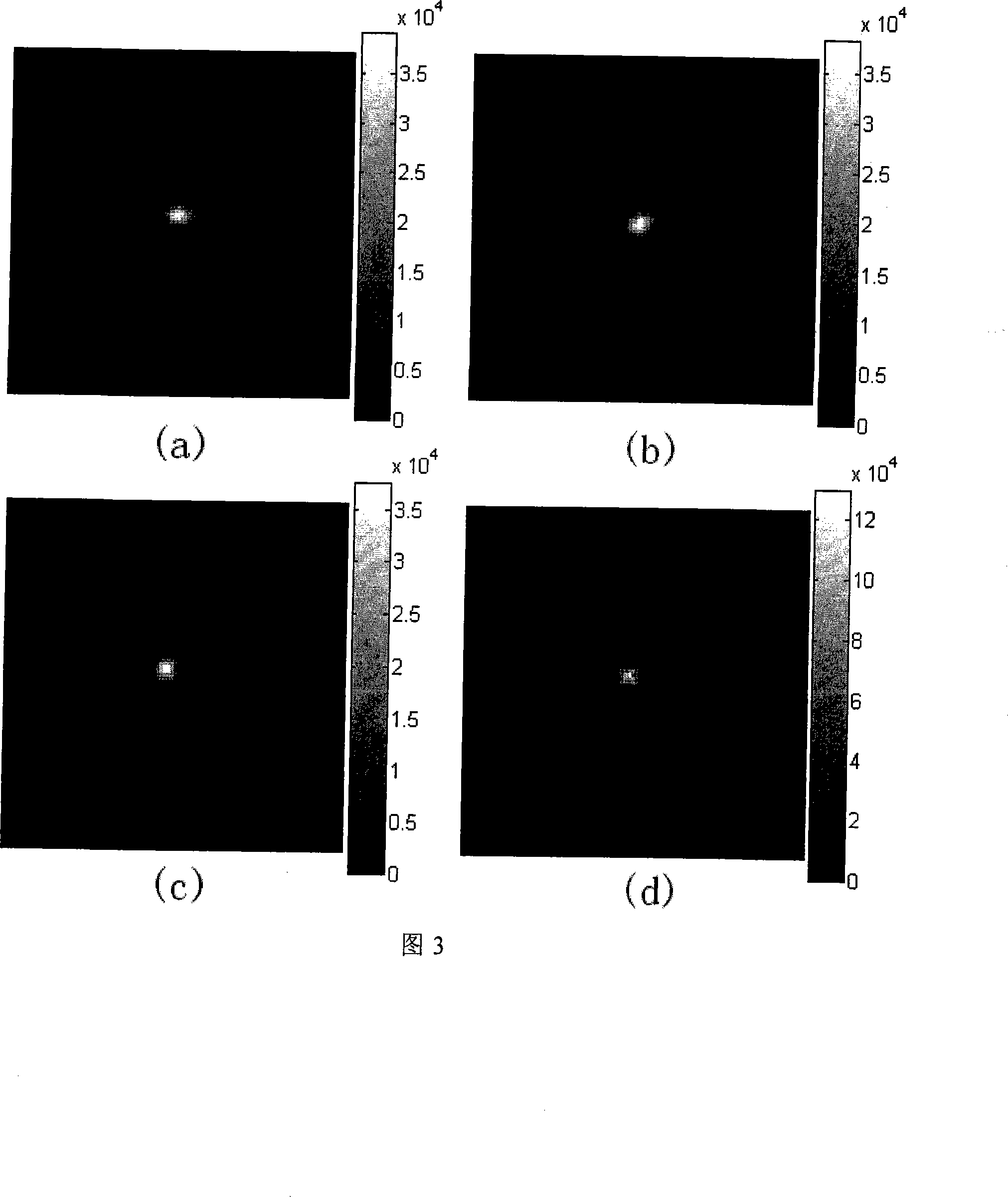Self-adaption optical image high resolution restoration method combining frame selection and blind deconvohtion
An adaptive optics and blind deconvolution technology, applied in the field of image processing, can solve the problems of not considering the wavefront aberration caused by the noise of the wavefront sensor, and not considering the secondary correction of the image, so as to reduce the possibility of falling into an invalid solution , improve the convergence speed and improve the effect of restoration quality
- Summary
- Abstract
- Description
- Claims
- Application Information
AI Technical Summary
Benefits of technology
Problems solved by technology
Method used
Image
Examples
Embodiment 1
[0049] As shown in Fig. 2, the blurred font is restored by using the present invention. Among them, (a) is the source image, (b)~(c) are two frames selected from 100 frames with noise and degraded image with random disturbance added by frame selection technology, and (d) is the restored image; the result It is shown that the present invention can effectively restore degraded images. The entire calculation process goes through 25 iterations and takes 20 seconds.
Embodiment 2
[0051]Applying the present invention to restore the image partially corrected by the adaptive optics system, as shown in FIG. 3 . (a)-(c) are three frames of 100 pixels × 100 pixels adaptive optics corrected star targets after frame selection. (d) is the result after secondary correction by the method of the present invention. Experiments show that the restoration results are better. The entire calculation process took 30 seconds and went through 30 iterations. It can be seen from Figure 3 that under the same energy, the peak value of (d) is 2.56 times, 2.38 and 2.45 times higher than that of (a) ~ (c), which means that the Strehl ratio is increased by 2.56 times , 2.38 and 2.45 times. Figure 4 compares the cross-sectional views of Figure 3(a) and (d).
[0052] For comparison, three frames of images are randomly selected from the short exposure sequence of degraded images for secondary processing, as shown in Figure 4: (a) to (c) are three frames of degraded images randoml...
PUM
 Login to View More
Login to View More Abstract
Description
Claims
Application Information
 Login to View More
Login to View More - R&D
- Intellectual Property
- Life Sciences
- Materials
- Tech Scout
- Unparalleled Data Quality
- Higher Quality Content
- 60% Fewer Hallucinations
Browse by: Latest US Patents, China's latest patents, Technical Efficacy Thesaurus, Application Domain, Technology Topic, Popular Technical Reports.
© 2025 PatSnap. All rights reserved.Legal|Privacy policy|Modern Slavery Act Transparency Statement|Sitemap|About US| Contact US: help@patsnap.com



